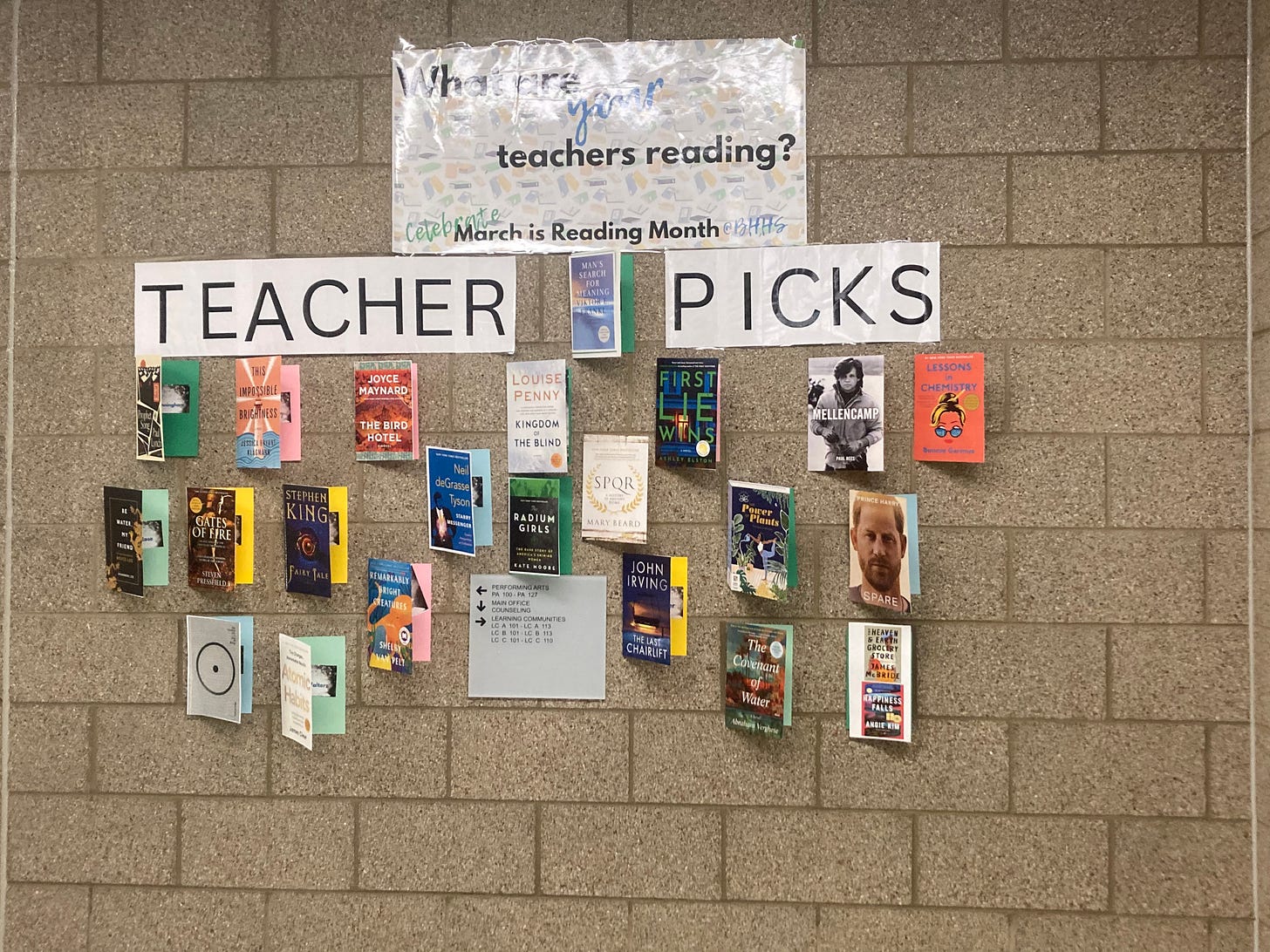“We are becoming the servants in thought, as in action, of the machine we have created to serve us.” —John Kenneth Galbraith
“I understand the need to be connected to your child, but we can do better. This year, let's pass bipartisan legislation to limit the use of phones in class.” —Michigan Governor Gretchen Whitmer (2-26-2025)
Digital divide?
Remember when this only meant the economic gap between effective digital technologies and those with less efficient, fewer connections, usually in reference to lower-middle class or rural educators and learners?
Turns out there’s a subtle yet more pernicious divide.
One which divides us under the guise of meaningful connection.
Steadily evident since the introduction of the iPhone in 2007, precipitously worse since Covid, it’s the profound rupture caused by student cell phones (and smartwatches) when used throughout the school day.
For years, I’ve been a vocal critic of this frequent elephant in the classroom (note My First Substack on the Cell Phone Problem), yet on Saturday, March 15, 2025, I wandered into a fascinating three-hour symposium probing this persistant detriment to mental health, learning, false senses of security — and some possible answers to “What is to be done?”
Why Not Start in Michigan’s Wealthiest City?
Had I grown up two streets north of my parent’s suburban ranch abode, I would have attended Bloomfield Hills Andover, now Bloomfield Hills High School, in Michigan’s wealthiest city of any population over 4,000. In this suburban mecca, the median income of $305,974 in 2023 suggests some kind of responsible privilege (I ended up attending public schools in Birmingham, the second wealthiest Michigan city).1
Still, Michigan lags behind the 19 States which have legislated student cell phone bans or restrictions in public schools, beginning with Florida’s ban in 2023.
If the district with the most resources wants to help initiate the governor’s bipartisan plea, why not check out such an unusual appeal on an atypically warm Saturday morning in March?
Within these rather strange circumstances, could the more affluent offer some favorable recommendations?
Instead of tips on selling shares, maybe sharing tips on cells?
Sorry, I still have to suppress some residual sarcasm.
Whenever I stroll onto campuses with inequities on full display (compared to my lower-middle class employment setting), my cynicism impulse twitches a bit.
Anyway, most discussions questioning the assumed progress of smart phones usually are shut down not only by more addicted students, but also by administrators reflexively claiming they do not have the staffing capabilities to enforce such policies.
Of course, during specially designated testing periods, the state and the SAT/ACT industries require the complete removal of all electronic devices for their high-stakes standardized examination procedures.
In sum, all schools ban cell phones for at least one day.
So why not the other 179 or so?
“All schools already ban cell phones for at least one day.”
Dopamine Distractions
The first keyonte speaker, psychotherapist and author Nicole Runyon, (noteworthy in my previous Subtack interview), reminded us why “It’s not the kids, it’s the culture” perpetuating the disturbing spike in teen depression and anxiety (and yes, teen suicide), coinciding with the rise in smart phone affordability, circa 2010.
Although organizers were hoping for a few hundred local activists, most of the 125 in attendance seemed quite responsive — except for those few scrolling and texting, without a trace of irony.
The second keynote, wellness and educational consultant Katey McPherson, emphasized how “phones do not save lives.” While briefly mentioning how excessive use of hand screen technologies in particular can trigger harmful levels of dopamine, cortisol, oxytocin and serotonin, she focused more on how adults simply make terrible role models in our efforts to curb cell phone use.
Breakout sessions focused primarily on concerned parents. The presentations continued variations on building a truly collective responsibility, in how to recapture adolescent play, empathic communication and the development of both essential independence and stronger communities — away from the ubiquitous screens.
To effectively close the conference, a panel of a half dozen Bloomfield High teenagers, seemed to magically appear from the clusters of adults.
What’s a Fomo?
Seated modestly on the stage, they passed the microphone back and forth, elaborating on the need for adults to practice what they preach in staying truly engaged, even when they feel overwhelmed with “Fomo” (Fear of missing out), boredom and the hidden anxieties of withdrawal.
The nervous laughter seemed to mix well with some genuine grins of blossoming activism.
While not yet a well organized movement, the resources are growing along with the research.2
Stay tuned for a deeper, ongoing analysis on the imperatives of reducing screen time, fed partially by Jonathan Haidt’s recent bestseller The Anxious Generation: How the Great Rewiring of Childhood Is Causing an Epidemic of Mental illness (Penguin Press, 2024).
Crossing the digital divide and salvaging true discussion-based and inquiry-centered pedagogy will be one my final projects (i. e. mission) before I retire from teaching full-time in an urban public school.
2026 would mark my 40th year as an educator. . . .
Thanks partly to this Substack format, I treasure writing weekly about these ongoing struggles for more meaningful participation in a truly democratic society.
More importantly, I also hope to run into some of you offline, in-person.
It probably won’t be in a wealthier suburb.
Perhaps we’ll unexpectedly meet up at a future poetry reading, book club gathering, gallery opening, theater performance—
or vivacious picket line3. . . .
A highlight of the rather sparsely attended (only about 125 area residents) — yet unuusal Saturday morning conference — included student commentary from a half dozen Bloomfield Hills High School students taking a seat on the stage towards the end of the conference.
While some educators might nervously chuckle over the end of literature, some schools are trying to reclaim a shared love of reading.
Carr Center Gallery, Detroit, currently includes works from Tyreek Morrison. Another quiet collison with the dominant screen world.
https://www.forbes.com/sites/andrewdepietro/2023/05/12/the-richest-cities-in-michigan-of-2023/
Special thanks to Nicole Runyon for co-organizing this much welcome, much overdue event. Hope to see you at another presentation in August. . . .







Cell phone and screens should be talked about in the same way we talk about gambling and cocaine. The underlying algorithms operate on the brain in the same ways. I tell my kiddos that the main purpose of the internet is to get you hooked and they should approach it with caution and care. We are on our own as fed gov removes any responsibility of tech lords.
I don't know how any teacher can get anything accomplished when students are constantly looking at their phones. Your patience and continued desire to want to teach amazes me.
I see very young kids- babies even- just scream and beg for the phone. When they do have it, they have their face inches from it and never stop scrolling.
That can't be healthy.